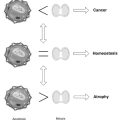Chapter 34 Botanical Medicine—Understanding Herbal Preparations
 Introduction
Introduction
Types of Extracts
Strengths of Extracts
The potencies or strengths of herbal extracts are generally expressed in two ways. If they contain known active principles, their strengths are commonly expressed in terms of the content of these active principles. Otherwise, the strength is expressed in terms of their concentration. For example, tinctures are typically made at a 1:5 to 1:10 concentration. This means one part of the herb (in grams) is soaked in five parts solvent (in milliliters of volume), meaning there is five times the amount of solvent (alcohol/water) in a tincture as there is herbal material. Fluid extracts are typically 1:1.
Determining Quality
Before the 1980s, the quality of the extract produced was often difficult to determine because many of the active principles of the herbs were unknown. However, advances in extraction processes, coupled with improved analytic methods, reduced this problem of quality control.1,2 The concentration method of expressing the strength of an extract does not accurately measure potency because there may be great variation among manufacturing techniques and raw materials. By using a high-quality herb (i.e., rich in active compounds), it is possible to have a more potent dried herb, tincture, or fluid extract compared with the solid extract that was made from a lower quality herb. Standardization of herbal extracts for key active constituents has been suggested to be the solution to this problem.3
Collection/Harvesting
Grinding
Often the material must be pre-chopped or minced before feeding it into a grinder. In the process of grinding, a number of machines can be used, but the most widely used is the hammer mill. These machines are simple in design. The hammers, arranged radially, follow the rotation of the shaft to which they are attached, breaking up the material that is fed into the machine from above. On the walls of the chamber is a grid, which determines the size of the material that is passed through it. Other types of grinders include knife mills and teeth mills.
 Analytic Methods
Analytic Methods
Methods currently used in evaluating herbs and their extracts include the following:
Chromatography
The most sophisticated analytic processes involve more highly technologic assays to determine quality. Advanced techniques such as thin-layer chromatography, high-pressure liquid chromatography, capillary electrophoresis, and nuclear magnetic resonance are used to precisely separate, identify, and quantify molecules. The readings from these machines provide a chemical “fingerprint” as to the nature of chemicals contained in the plant or extract.4 These techniques are invaluable in the effort to identify herbs, as well as to standardize extracts.
 Quality Control in Herbal Products
Quality Control in Herbal Products
Currently, only a few manufacturers adhere to complete quality control and good manufacturing practices. Companies supplying standardized extracts currently offer the greatest degree of quality control; hence, these products typically offer the highest quality. The production of standardized extracts seeking registration in Europe may serve as a model for quality control processes for all forms of herbal preparations (Box 34-1). In general, it is believed that if the active components of a particular herb are known, whatever the form of the herb product, the herb should be analyzed to ensure that it contains these components at a medicinally appropriate level. More accurate dosages can then be given. Products should also be subjected to bacteriologic counts and be free of contaminants.
BOX 34-1 List of Quality Control Steps Necessary for the Registration of Plant-Based Drug Formulation
1. Selection of suitable plant material
2. Botanical investigation using organoleptic and microscopic techniques
3. Chemical analysis using appropriate laboratory equipment
4. Screening for biological activity
5. Analysis of active fractions of crude extracts
6. Isolation of active principles
7. Determination of chemical structure of active principles
8. Comparison with compounds of similar structure
9. Analytic method developed for formulation
10. Detailed pharmacologic evaluation
11. Studies performed to determine activity and toxicity of formulation
12. Studies on absorption, distribution, and elimination of herbal compounds
13. Clinical trials performed to determine activity in humans
 Final Comments
Final Comments
The systems of herbal medicine that have been proved to a large extent are based on delivering much higher levels of herbal compounds than those easily obtained via the use of tinctures. Specifically, we are referring to the use of highly concentrated standardized extracts from Europe and the use of herbal preparations in Traditional Chinese Medicine and Ayurveda. In Traditional Chinese Medicine, the typical daily dose of prescribed crude herbal material is approximately 20 g. This high level of dosage is in stark contrast to a much smaller average amount of the herbal material recommended in the British Herbal Pharmacopoeia of 2 to 4 mL of a 1:5 tincture, which provides less than 1 g of herbal material. This difference in dosage may explain the differences in popularity of herbal medicine in China, Japan, India, and Germany compared with its relative obscurity in England, as well as in the United States before the previous decade. The key point is that herbal medicine is not going to be popular if it is not effective. It can be argued that the greater the effectiveness, the greater the popularity.
1. Bonati A. Formulation of plant extracts into dosage forms. In: Wijeskera R.O.B., ed. The medicinal plant industry. Boca Raton, FL: CRC Press; 1991:107–114.
2. Karlsen J. Quality control and instrumental analysis of plant extracts. In: Wijeskera R.O.B., ed. The medicinal plant industry. Boca Raton, FL: CRC Press; 1991:99–106.
3. Bonati A. How and why should we standardize phytopharmical drugs for clinical validation? J Ethnopharmacol. 1991;32:195–197.
4. Gong F., Liang Y.Z., Xie P.S., et al. Information theory applied to chromatographic fingerprint of herbal medicine for quality control. J Chromatogr A. 2003;1002:25–40.


